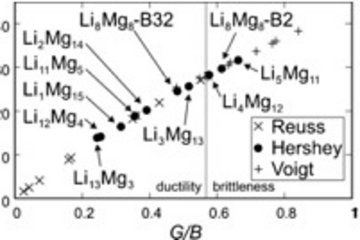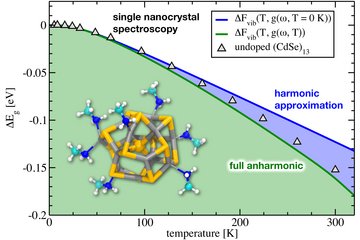All genres
1.
Journal Article
Differences in perchlorate adsorption to azobenzene monolayers on gold formed from thioacetate and thiol precursors. Zeitschrift für physikalische Chemie 236 (10) (2022)
2.
Journal Article
Cathodic delamination kinetics of thin polystyrene model coatings bound to zinc via organosilanes. Materials and Corrosion - Werkstoffe und Korrosion 70 (3), pp. 481 - 491 (2019)
3.
Journal Article
Pretreatment with a β-Cyclodextrin-Corrosion Inhibitor Complex Stops an Initiated Corrosion Process on Zinc. Langmuir 35 (1), pp. 70 - 77 (2019)
4.
Journal Article
Detection of intra-band gap defects states in spin-coated sol-gel SnOx nanolayers by photoelectron spectroscopies. Journal of Physics D: Applied Physics 51, 315301 (2018)
5.
Journal Article
Cyclodextrin inhibits zinc corrosion by destabilizing point defect formation in the oxide layer. Beilstein Journal of Nanotechnology 9, pp. 936 - 944 (2018)
6.
Journal Article
Gradient in defect density of ZnO nanorods grown by cathodic delamination, a corrosion process, leads to end-specific luminescence. Nanoscale Horizons 3 (1), pp. 58 - 65 (2018)
7.
Journal Article
Charge transfer quantification in a SnOx/CuPc semiconductor heterostructure: investigation of buried interface energy structure by photoelectron spectroscopies. Physical Chemistry Chemical Physics 19 (19), pp. 11816 - 11824 (2017)
8.
Journal Article
In situ and operando observation of surface oxides during oxygen evolution reaction on copper. Electrochimica Acta 236, pp. 104 - 115 (2017)
9.
Journal Article
Effect of Polarisation Mimicking Cathodic Electrodeposition Coating on Industrially Relevant Metal Substrates with ZrO2-Based Conversion Coatings. ChemElectroChem 3 (9), pp. 1415 - 1421 (2016)
10.
Journal Article
Surface Functionalization of Oxide-Covered Zinc and Iron with Phosphonated Phenylethynyl Phenothiazine. Langmuir 31 (26), pp. 7306 - 7316 (2015)
11.
Journal Article
Zinc oxide as a defect-dominated material in thin films for photovoltaic applications - experimental determination of defect levels, quantification of composition, and construction of band diagram. Physical Chemistry Chemical Physics 17 (15), pp. 10004 - 10013 (2015)
12.
Journal Article
Modellexperimente für elektrochemische Energieumwandlung und Korrosion. Bunsen-Magazin 17 (1), pp. 3 - 9 (2015)
13.
Journal Article
Metallic, oxygen-containing reaction products after polarisation of iron in H2S saturated saline solutions. Corrosion Science 98, pp. 725 - 736 (2015)
14.
Journal Article
Solvent-starved conditions in confinement cause chemical oscillations excited by passage of a cathodic delamination front. Chemical Communications 51 (89), pp. 16041 - 16044 (2015)
15.
Journal Article
Towards monomaterial p-n junctions: single-step fabrication of tin oxide films and their non-destructive characterisation by angle-dependent X-ray photoelectron spectroscopy. Applied Physics Letters 107 (23), 231601 (2015)
16.
Journal Article
A new look at oxide formation at the copper/electrolyte interface by in situ spectroscopies. Physical Chemistry Chemical Physics 17, pp. 31670 - 31679 (2015)
17.
Journal Article
Sequential growth of zinc oxide nanorod arrays at room temperature via a corrosion process: Application in visible light photocatalysis. ACS Applied Materials & Interfaces 6 (21), pp. 18728 - 18734 (2014)
18.
Journal Article
Synthesis of ultrathin poly(methyl methacrylate) model coatings bound via organosilanes to zinc and investigation of their delamination kinetics. ACS Applied Materials & Interfaces 6 (20), pp. 18112 - 18121 (2014)
19.
Journal Article
Role of intermetallics and copper in the deposition of ZrO2-based conversion coatings on AA6014. Journal of the Electrochemical Society 161 (12), pp. C509 - C516 (2014)
20.
Journal Article
High-concentration graphene dispersions with minimal stabilizer: A scaffold for enzyme immobilization for glucose oxidation. Chemistry - A European Journal 20 (1), pp. 5752 - 5761 (2014)











